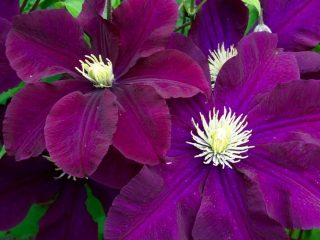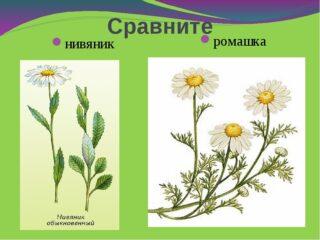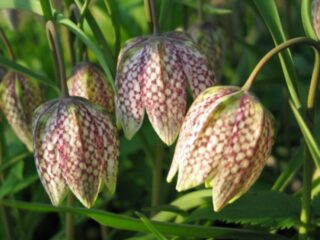Content
Rose Aqua is a hybrid tea variety of Dutch selection. It has a long flowering period, good immunity and good winter hardiness. Highly decorative is actively used in landscape design, but requires some care.
Origin story
The Aqua Pink rose is of Dutch origin. The variety belongs to the European collection of the Schreurs company. To obtain it, a tea rose and a remontant rose were crossed.
Description and characteristics of Aqua rose
Usually the Aqua rose is without thorns, although their presence is not completely excluded. The variety grows as an upright bush. Its main characteristics:
- bush height is average, 0.8-1.1 m;
- width 60-65 cm;
- the stems are smooth, strong and thick, length 50-90 cm;
- bud shape is classic, goblet-shaped, height 4-5 cm;
- petals are dense, tight, sinewy;
- the aroma is subtle and unobtrusive, sweetish, persistent;
- compound leaf consisting of 5-7 leaflets;
- double flower, diameter 8-12 cm;
- the core is closed;
- sepals light green;
- each bud has 30-50 petals, the tips are slightly curled;
- The leaf blades are dense, dark green in color, with slight pubescence on the underside.
The Aqua rose has pink-lilac petals. The base is slightly lighter than the edges. The color of the pink Aqua rose changes throughout the season. The flower fades in the sun. When the buds fully open, the petals turn soft blue or pale pink in intense light.
This hybrid tea variety blooms for a long time. The buds bloom at the end of June. Flowering continues until cold weather sets in. During the season there are 2-3 waves of it. Autumn flowering is usually the longest.
The variety has average resistance to rain. Some buds may be damaged.
Rose Pink Aqua has good immunity. The variety is characterized by average resistance to black spot. This disease can affect the flower in unfavorable years. High resistance to powdery mildew.
In terms of frost resistance, Aqua rose belongs to USDA zone 6 (Central Poland, Hungary, Kyiv, Transcarpathia, eastern Hungary). The flower can withstand cold temperatures down to -17.8-23.3 °C. It winters well if the shelter is properly organized.
Advantages and disadvantages
The variety is grown in private gardens and for industrial purposes. It is suitable for open and protected ground. The photo below shows a cut rose of the Aqua variety.

A bouquet can last up to 10-12 days in a vase.
Pros:
- abundant flowering;
- strong stems;
- persistent delicate aroma;
- absence of thorns;
- good immunity;
- possibility of repeated flowering;
- cutting stability.
Minuses:
- sunburn with discoloration;
- insufficient resistance to rain;
- susceptibility to black spot.
Recommendations for cultivation
Rose Aqua can be planted in spring. Depending on the climate in the region, work is planned for the last days of April or May. The flower is also planted in late summer or early autumn. There should be at least three weeks left before the cold weather.
For the Aqua rose, it is better to choose areas with good lighting, but shading at midday. A flower needs the following conditions:
- the place is dry and ventilated;
- absence of drafts;
- protection from the cold north wind;
- remoteness of groundwater;
- good drainage;
- breathable fertile soil;
- loam and black soil are optimal;
- soil reaction is neutral (pH 5.5-6.5).
To plant Aqua roses, prepare holes 0.5 m deep. The algorithm is as follows:
- Organize drainage with a layer of 7-10 cm. Expanded clay and crushed stone are suitable.
- Add humus, sand, mineral fertilizers to the fertile soil and mix.
- Form the mixture into a tall mound.
- Shorten shoots and roots by 2-3 cm.
- Place the seedling on a mound in the center, straighten the roots.
- Fill the hole 2/3 full.
- Pour in a bucket of warm water.
- Fill the hole completely with soil mixture.
- Mulch the plantings. You can use peat and mowed grass.
The bushes are planted at a distance of 80 cm, leaving 2 m between rows. Systematic weeding and thinning as necessary are required.
Rosa Aqua needs comprehensive care. Water it 3-4 times a week. Overmoistening and water ingress on the above-ground part of the bush is unacceptable. The flower should be watered early in the morning. The next day the soil is loosened.

In the first year of flowering, it is recommended to cut roses so that the plant directs all its energy to growth and rooting.
Rose Aqua needs feeding four times per season:
- a complete mineral complex, when sap flow begins, the emphasis is on nitrogen;
- potassium-phosphorus fertilizers, mullein or humus solution in the budding phase, after summer pruning and in autumn.
In spring, the rose is mulched with peat. You can use manure, but only rotted manure, otherwise the roots will burn.
For Aqua roses, medium pruning is optimal. Leave 8-10 dormant buds. The rose is pruned three times per season:
- the beginning of spring, before the buds appear - remove all frozen, broken shoots;
- mid summer;
- before wintering - removal of immature, damaged shoots.
Rosa Aqua requires shelter for the winter. The bushes are hilled high, and the shoots are bent to the ground and fixed. Burlap is used as a shelter, insulated with peat, straw or fallen leaves.
Reproduction methods
Rose Aqua can be propagated in different ways. The options are:
- dividing the bush;
- cuttings are the easiest and most effective way, optimally carried out during July;
- propagation by layering.
Diseases and pests
The Aqua variety can be affected by black spot. This is a fungal disease. Black or brown spots of irregular shape appear on the leaves and may merge. The disease begins in the spring after the snow melts. Re-infection is possible from fallen leaves from last year. To combat black spotting, fungicides are used:
- Ridomil Gold;
- Topaz;
- Profit.

Without treatment of black spot, the leaves turn yellow and fall off, the bush dies after 2-3 seasons
Rose Aqua may suffer from rust, which affects all above-ground parts of the flower. The disease manifests itself as growths on the stems and upper parts of the leaves. Rusty-colored pustules form on their undersides. In affected roses, the leaves turn pale and fall off, and the plant becomes depleted. Fungicides are used for treatment:
- Bordeaux mixture;
- copper sulfate;
- Topaz;
- Home;
- Abiga Peak.

To prevent rust, it is important to timely remove fallen leaves, thin out bushes, and spray with fungicides.
Among the pests, the Aqua rose can be affected by the slobbering pennitsa. This small insect prefers moisture and shade. Such conditions are provided to it by the secreted liquid, resembling foam. The insect lays eggs in it - small yellow dots.
Various methods are used to control the pest:
- chemicals - Fufanon, Previkur Energy, Zeta, Karbofos, Decis Profi. Confidor;
- traditional methods - washing with a hose and treating with tobacco dust or ash, tincture of garlic with laundry soap, and wormwood.

Before treating against pennies, plants should have a shower (water at room temperature) to wash off the pest’s secretions.
Application in landscape design
Rose Aqua looks good in single plantings. It is planted in the middle of the site, near buildings and fences.

When planting roses next to trees, it is important to consider that the flowers should receive direct sunlight for at least four hours a day
The variety is also good in group plantings. It is planted in borders and mixborders, combined with conifers, cereals, and various annuals.

Aqua roses go well with other flowering plants in white, blue, and purple colors
Conclusion
Rose Aqua is a Dutch hybrid tea variety without thorns.It is characterized by repeated flowering, fading in the sun with a change in shade, and stability when cut. The variety is susceptible to black spot and is immune to powdery mildew.
Reviews about rose Aqua








